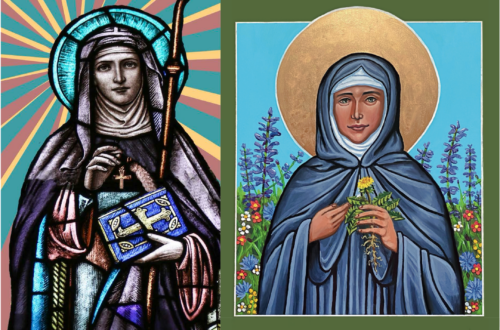Young Adult Fiction
 Who is a Catholic? What role does Catholicism play in the lives of young Catholics? Christian Smith, director of the Center for the Study of Religion in Society at Notre Dame, worked with his colleagues to answer these questions in their new book Young Catholic America: Emerging Adults In, Out of, and Gone from the Church. Using survey data from several sources, they focus on what they call “emerging adults”—Catholics between the ages of 18-23. Seeking to understand why young people stay in the church or leave their Catholic identity behind, the authors do ask a broad range of questions. Readers are left with some questions of their own, among them the sense that some crucial questions about young Catholics’ spiritual lives remained unasked. It is possible that the reason the authors did not get to these questions was from an obsession with categorizing Catholics into boxes instead of seeing us for the broad, diverse group of young adults that we are.
Who is a Catholic? What role does Catholicism play in the lives of young Catholics? Christian Smith, director of the Center for the Study of Religion in Society at Notre Dame, worked with his colleagues to answer these questions in their new book Young Catholic America: Emerging Adults In, Out of, and Gone from the Church. Using survey data from several sources, they focus on what they call “emerging adults”—Catholics between the ages of 18-23. Seeking to understand why young people stay in the church or leave their Catholic identity behind, the authors do ask a broad range of questions. Readers are left with some questions of their own, among them the sense that some crucial questions about young Catholics’ spiritual lives remained unasked. It is possible that the reason the authors did not get to these questions was from an obsession with categorizing Catholics into boxes instead of seeing us for the broad, diverse group of young adults that we are.
In order to compare today’s Catholics in the 18-23 cohort to young Catholics of the past, Young Catholic America uses two main instruments. The principal source is the National Study of Youth and Religion, an ongoing project co-directed by Smith. Historical context is provided by the General Social Survey, a study of the American population conducted annually or biennially by the National Opinion Research Center at the University of Chicago since 1972. The authors analyze the beliefs and lifestyles of Catholic emerging adults in the 1970s, 1980s, 1990s and the 2000s and then compare the sample to non-Catholic counterparts.
The findings indicate that, while there have been some changes in what young Catholics believe and in how they live within the last four decades, these differences are not significant. Nevertheless, there is a measurable decline in some measures of religious identity and practice among Catholics of this age group since the 1970s. The research team proposes that the upward educational and economic mobility of Catholics, the effect of Vatican II on the American Catholic church and the dramatic decline in vocations all could have instigated the parents of today’s young Catholics to become disengaged from the church, starting a domino effect upon future generations of Catholics.
After presenting first-person narratives to help explain why Mass attendance and adherence to core Catholic beliefs are waning, Young Catholic America takes a more theoretical look into what makes people “actually Catholic.” This is where Young Catholic America takes a turn for the worse. The authors acknowledge that previous studies basing Catholic identity on Mass attendance are too narrow, and propose to use a “more refined set of filters.” But the result is as though the survey participants were awarded up to seven merit badges in areas that barely skimmed the depths of their spiritual lives.
Catholics with either a nominal self-identification or a family tie to the church are placed at the low end of the spectrum. At the other end of the scale are those designated “completely” or “mostly” Catholic, who must have three of the following four characteristics: regular Mass attendance, Catholic self-identity, Catholic parents and a Catholic upbringing. Smith asserts, “We can therefore expect these young people’s worlds to be infused with the distinctive characteristics of the Catholic faith, more so than other Catholics.”
For a book seeking to explain why Catholics are becoming disengaged from the church, it seems to be narrowing the field even further by excluding Catholics who do not fit an arbitrary ideal. Especially telling were the 41 follow-up interviews conducted with participants who had been first contacted as self-identifying Catholics while in their teens. Five years later, 29 had either “left Catholicism altogether, become estranged from the Church even though they still consider themselves Catholic, or simply become religiously inactive even though they are not particularly alienated from the Church.” The largest cohort was the group of 12 young people labeled “engaged” because Catholic practices and beliefs played the most significant role in their lives.
The top level was reserved for the “devout” Catholics, but Smith and his colleagues could not find one interview subject who met their criteria (while stressing that they do know people who would qualify). The person who gets closest is a young person named Tommy. He is a Catholic “born and raised,” goes to church, considers himself “moderately religious,” enjoys tradition, believes in transubstantiation and plans to be a Catholic for the rest of his life. Why wouldn’t someone like Tommy be placed among the devout elite? Simply put: Tommy disagrees with church teaching on sex before marriage, homosexuality, abortion and requiring priests to remain celibate. Speaking about abortion, Tommy told the interviewers, “I don’t think we as individuals have rights to tell someone else whether they should do it or not.” He called the church’s teachings on premarital sex and homosexuality “narrow-minded” or even “just ridiculous.” To be devout, within the confines of this book, is to never question the church. But of course, Catholics can and do disagree with the church’s position, in good conscience. This discredits the authors’ criteria, not the level of devotion displayed by the Tommys in the church.
The entire Catholic sample was then divided into three categories: practicing, sporadic and disengaged. Practicing Catholics are those who “take their faith seriously and practice it both publicly and privately.” These subgroups are rated on areas such as relationships with parents, volunteer hours, life satisfaction, moral beliefs and sexual practices, as well as risk-taking behaviors like binge drinking, marijuana use and fighting.
In most cases the scores for the three groups were very similar, but one of the statistically significant differences appeared in the use of a condom during recent sexual intercourse—73 percent of practicing Catholics had used a condom compared to 63 percent of sporadic Catholics, 63 percent of the entire US sample and 52 percent of the disengaged Catholics. Interestingly, the authors attribute the higher prevalence of condom use among the practicing Catholics to their being in more serious relationships than their peers, and not to their faith. There was no significant difference in the number of abortions reported by young women from the different groups—three for the US sample, four for practicing and dis-engaged Catholics, and five for the -sporadic group—which is itself interesting, but this parity is not explored in the book.
Overall, the authors say that their practicing Catholics “are doing … better on many of the outcomes” mentioned above, but they acknowledge that this is not “a matter of one-directional causation.” We are asked to take more on faith with their assertion that the lack of “devout” Catholics in their sample does not imply that their definition should be adjusted, because “in the development of social institutions, it is small groups of highly committed people, rather than masses of more loosely affiliated people, who end up making the biggest difference.” They are banking on this group to be future leaders of the Catholic community. But even more than discrepancies with the way they carve up the data, the writers seem to miss the savor of the meal, the Catholic nourishment that keeps people of faith coming back for more.
Like other litmus tests of Catholicity, Young Catholic America forgets that there is no checklist for what makes someone Catholic. We are Catholic when we are baptized, and from that point we grow as individuals and come to express our Catholic identity in different ways. This doesn’t make one person more Catholic than the other, and it certainly doesn’t make one person a better Catholic. What Smith sees as young people who are unable to articulate church doctrine are actually lay Catholics making decisions based on the context of their own lives and then living their faith, in good conscience, according to those observations.
As a young Catholic who has worked with other young people of my faith, I do find one point of agreement with the authors: relationships are very important in sustaining Catholic identity. This research focuses on Catholic role models, especially parents, playing an important part in the development of children’s religious identity. Young Catholic America concludes that the decline in Mass attendance and general disengagement among emerging adult Catholics can be linked to parents who did not provide Catholic role models or model devout behavior. While I agree with Smith about the importance of relationships, he appears to be seeing the definition of significant relationships from another generation’s eyes. My experience tells me that young people’s most influential relationships are not necessarily top-down and certainly less deterministic. I’ve witnessed more lateral inspiration happen. Peer to peer, it moves from young Catholics with a deep spiritual life to other groups—Catholic or not, young or not—who share similar visions of what kind of world they want to live in. The lives of young Catholics are a mixture of personal experience and the impact of various relationships around them.




